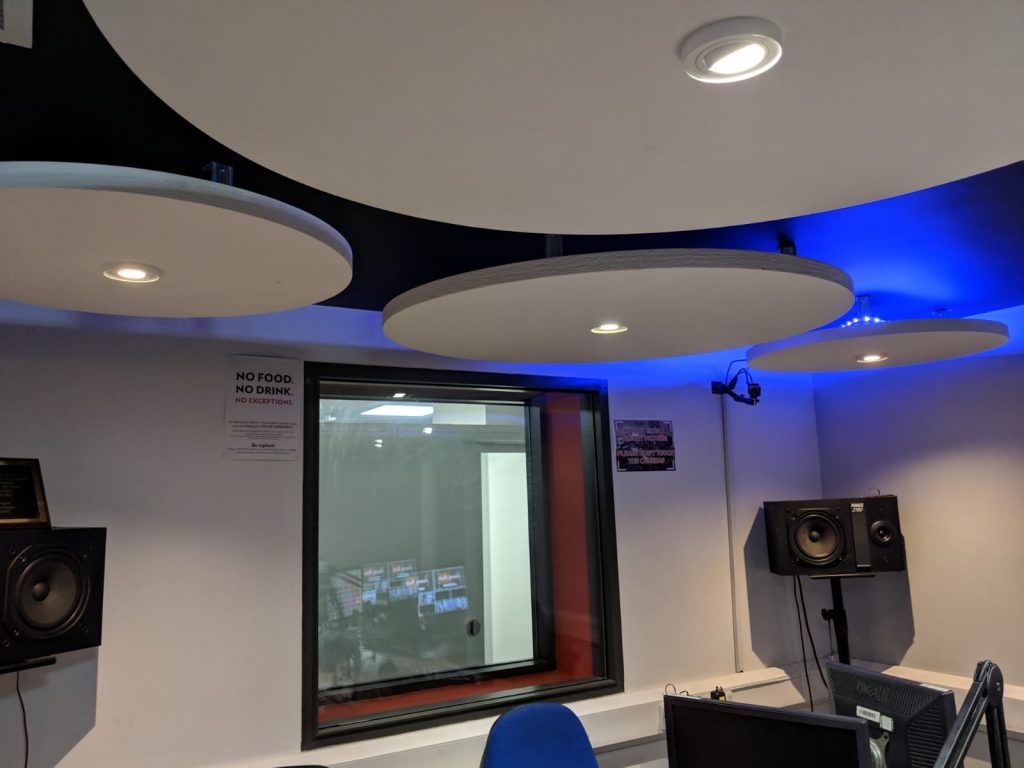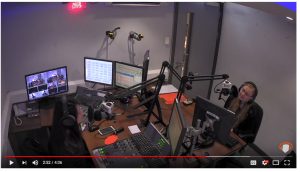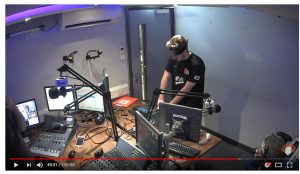Studio Lighting On The Cheap: A Quick Overview
As we’ve written about before, visualised radio is one heck of a way to connect with your audience through social media.
But making your studio look good on camera isn’t as easy as re-painting your studio and putting the cameras in good places – your lighting needs to not suck. Here’s some quick lighting advice that will make your radio studio look ten times better without investing in expensive studio lighting.
You can apply this without investing in any specialist lights if your studio has ceiling spotlights, as these can easily be re-angled.
Camera Colours
It’s probably a good idea to configure your studio cameras to have the same colour temperature and gain. The lower the gain, the less noisy the image will be.
Make sure that your colour temperature isn’t too warm or cool.
Light Positioning
The main thing is that you position your lights properly. You want some sort of light behind your presenters to avoid large shadows, and you’ll need a light on the presenters so that you can see them.
The most important thing is the vertical angle of the light, as you shouldn’t have it facing directly down onto a presenter – aim for a diagonal (45º is good). Instead, try angling the lights above one presenting position towards the other.
Our studio has spotlights. Many standard fitting lights allow you to angle the lamp. You can use this to point the lamp in a different direction.
If you can’t re-angle your lights, you can cheat and cut a piece of black plastic into a semi-circle and use this to direct light.

Lighting Colour
Remember that cameras capture images using three channels – red, green and blue. This is very different to what our eyes expect, so some lights will simply not look good on camera.
Fluorescent (and compact fluorescent) lamps only really emit a small range of colours, and tend to show up very green on camera.
Halogen lamps don’t emit much blue light, but by slightly adjusting the colour temperature you can somewhat compensate. You’ll still likely get a very warm image, which might not be what you expect.
White LED lamps produce light at a lot of different frequencies, and have a relatively good balance of colour. As you’d expect, cool LEDs produce more blue light than warm lamps, so depending on the feel of your studio/station choose wisely. Warmer LEDs, however, produce a lot of green light.
LEDs also have a good lifespan and are more environmentally friendly.
Comparison
Before we made these simple changes to our room lighting, our picture quality was very poor. It was hard to watch as the studio looked very pink, even with colour temperature adjustments on halogen bulbs. After swapping to cooler bulbs and re-angling lamps to direct light diagonally, the quality of picture increased dramatically.

